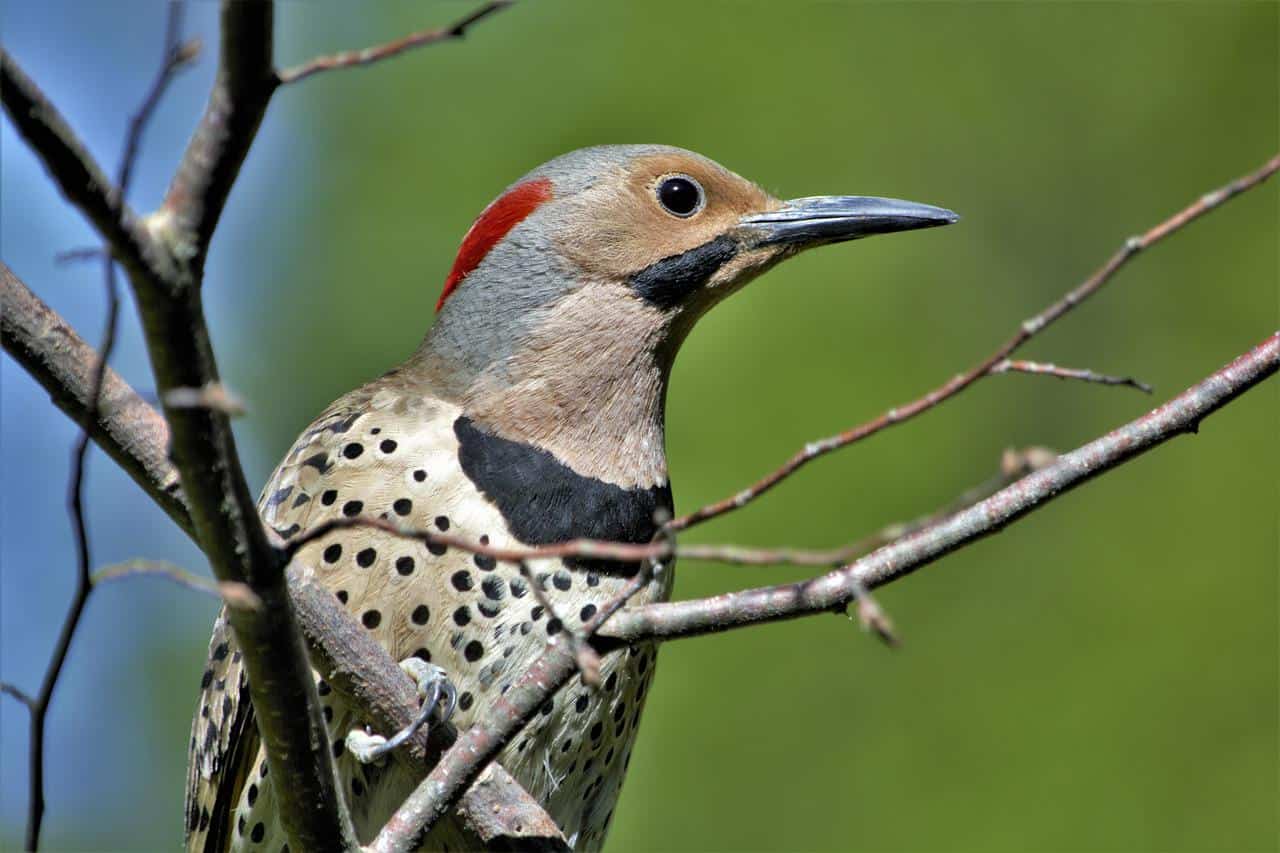Yes, some woodpecker species do migrate from Minnesota while five species do not. In this article, I’ll reveal all eight woodpeckers and whether or not they migrate to escape Minnesota’s winters.
For each migrating woodpecker, I included photos and descriptions to help you identify them, diet and habitat information so you can tell if you’re surrounded by an area where they might live, feeder food they love so you can entice them to your yard, and details of their migration behavior so you know when they’re expected to be where. Lastly, you’ll find range maps illustrating their exact locations so you know which ones to keep an eye out for.
Why Minnesota Woodpeckers Migrate
Like many other wild birds, some woodpecker species migrate twice a year. According to World Migratory Bird Day, the reason birds migrate is “to find the best ecological conditions and habitats for feeding, breeding, and raising their young”.
Scientists believe birds may also migrate due to genetic predisposition or a genetically driven urge to migrate.
Birds migrate to find the best ecological conditions and habitats for feeding, breeding, and raising their young.
World Migratory Bird Day
Minnesota Woodpeckers that Migrate
The three Minnesota woodpecker species that migrate are listed below followed by photos, descriptions, diet, feeder food, habitat, and detailed migration information.
In case you weren’t aware, sapsuckers and flickers are part of the woodpecker family!
- Northern Flicker
- Red-Headed Woodpecker
- Yellow-Bellied Sapsucker
1. Northern Flicker
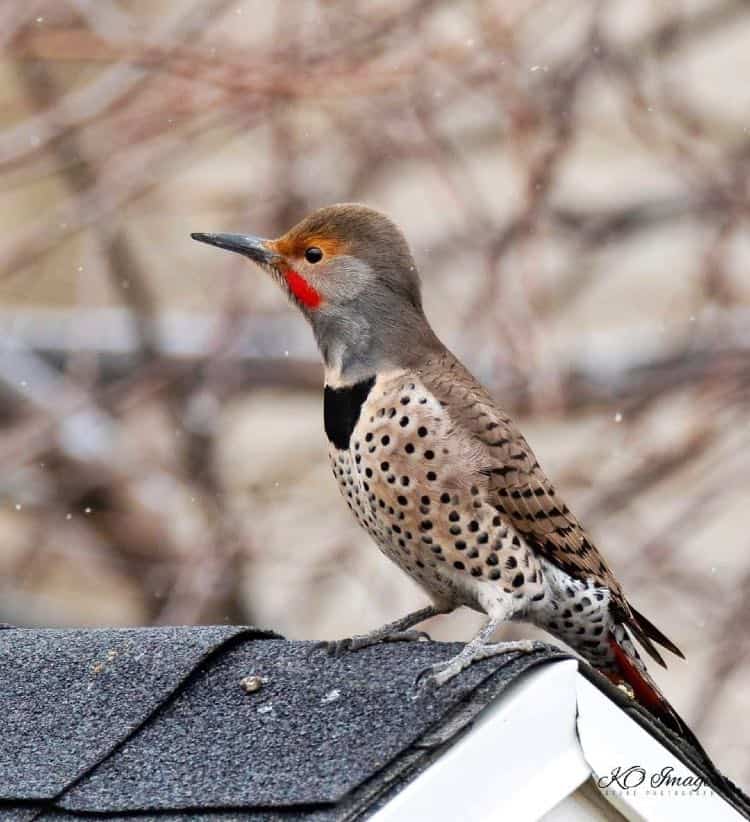
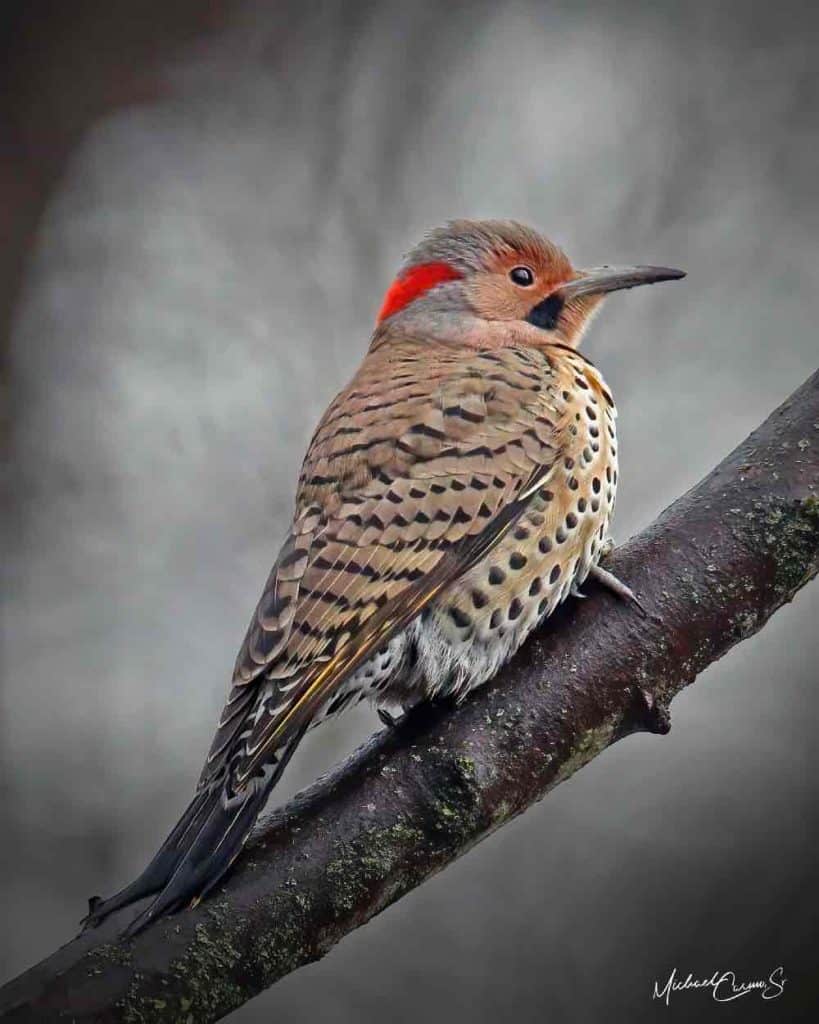
Appearance: A large bird about 12.5″ long. They have brown backs with black bars, a black crescent on the upper chest, and white with black spots on the belly and underparts.
• In the eastern part of their range, they are referred to as “yellow-shafted northern flickers” and have bright yellow underwings and undertail. They have a gray crown, tan face, and a red patch on the nape. The male has a black swipe on his cheek, the female does not.
• In the western part of their range, they are referred to as “red-shafted northern flickers” and have pink underwings and undertail, brown crown, gray face, and crown & nape are brown. The male has a red swipe on his cheek, the female does not
Diet: Insects, especially ants.
Feeder food: Hulled peanuts and suet.
Habitat: Open areas near trees.
Migration: Northern flickers are migrators. Scientists believe the timing and duration of their migration from the breeding range to their winter range are dependent on the weather. When they do migrate, they generally do so at night and travel in large but loose flocks of up to 100 or so birds.
Year-round range: Northern flickers make Minnesota their home year-round.
Breeding range: While some northern flickers remain in Minnesota to breed, many others migrate north to raise their young – but only for a season.
Winter range: While some northern flickers migrate south for winter, it’s highly likely most Minnesota ones remain in the state for the season.
Range Map
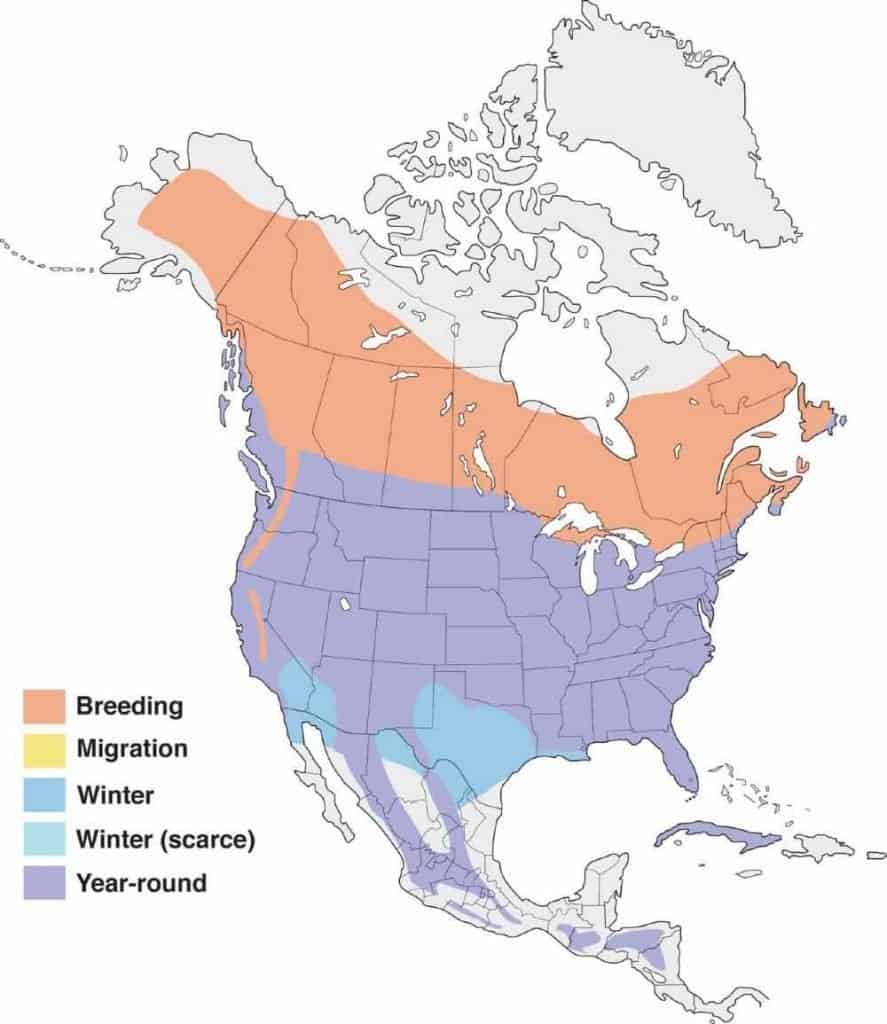
2. Red-Headed Woodpecker
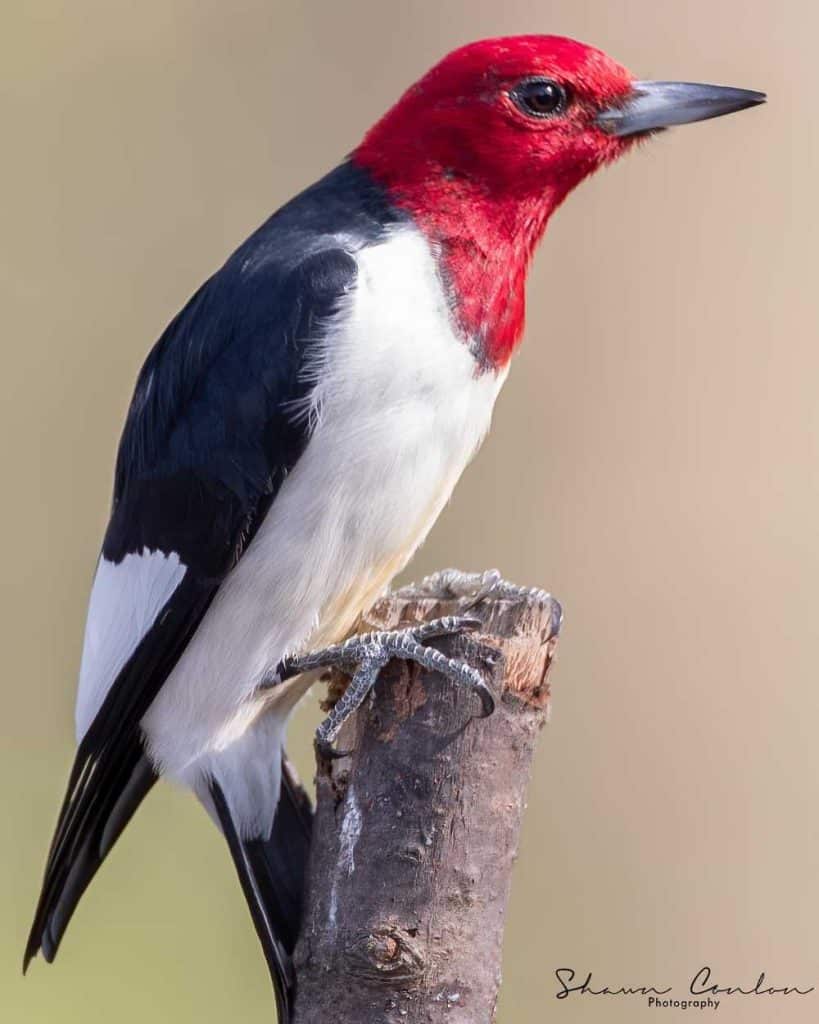
Appearance: Red-headed woodpeckers are medium-sized birds about 9″ long with a red head, black back, white rump, chest, and belly. Also has white patches on its wings, black tail, and gray legs and bill. The female is the same as the male.
Diet: Insects, fruit, nuts, and seeds.
Feeder food: Suet and hulled peanuts.
Habitat: During the breeding season, they prefer open woodlands especially when ample deciduous trees are present, as well as short-grass meadows, pastures, or even golf courses. In the winter they can be found in tall grass prairies with plenty of oak trees and anywhere a mass of acorn crops are present.
Migration: Most, but not all, red-headed woodpeckers migrate from Minnesota.
Year-round range: Red-headed woodpeckers make a small corner of Minnesota their home year-round – the far southeast corner of the state.
Breeding range: While some red-headed woodpeckers may remain in the northeast corner of Minnesota to breed, most others migrate north throughout the rest of Minnesota. How exciting for Minnesotans throughout the state to be able to spend a season with this beautiful woodpecker – if only for a season.
Winter range: The Minnesotan red-headed woodpeckers that went north into the state to breed migrate back to the southeastern corner of the state in fall. Most remain there for the winter while others may migrate further south for the winter. The winter movement is highly dependent on acorn supplies. When in abundance, they may not migrate from their year-round range at all.
Range Map
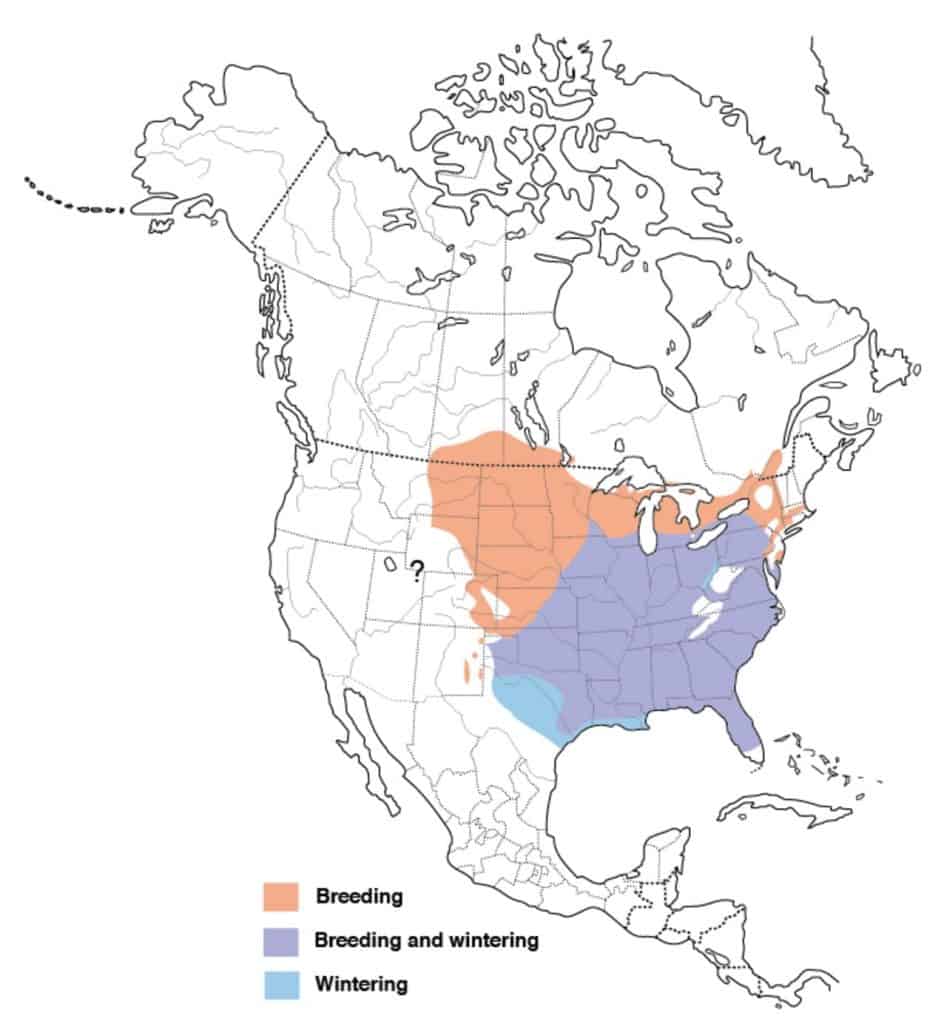
3. Yellow-Bellied Sapsucker
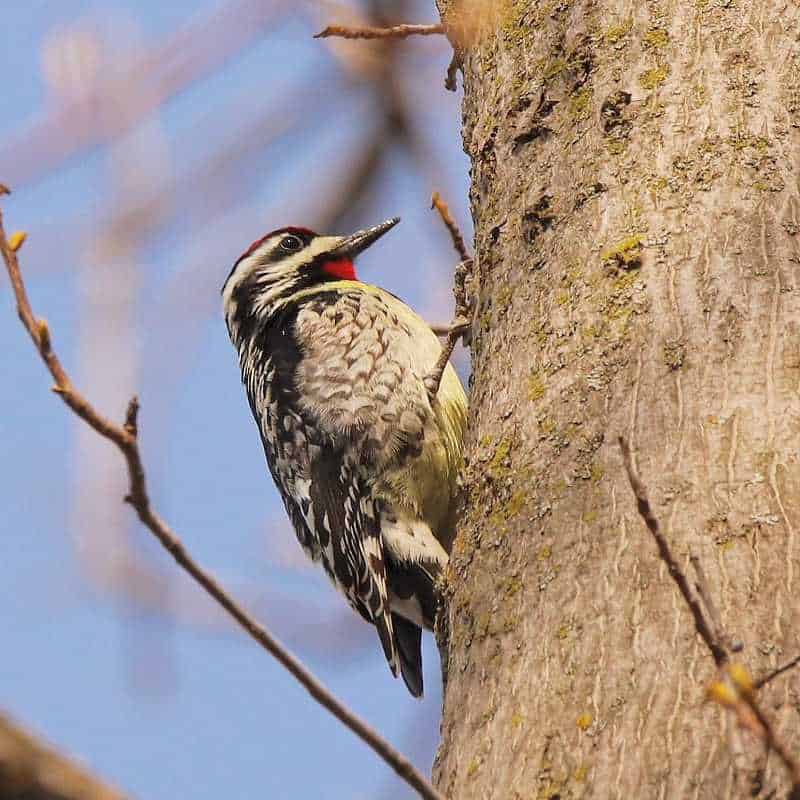
Appearance: Small bird about 8-9″ long with a checkered back. They have a red forehead, crown, and chin. The chest and belly are tan to yellow and have white wing patches. The Female is similar except she has a white marking on her chin.
Diet: Berries and fruit, bast (inner bark of a tree), few insects.
Feeder food: Suet.
Habitat: They prefer densely wooded areas with living trees (most woodpeckers prefer dead trees).
Migration: Yellow-bellied sapsuckers are true migrators that don’t have a year-round home. But all is not lost for Minnesotans! Around the April-early May timeframe, these birds begin their migration north in search of ideal nesting conditions. One location where they love to raise their young is the northern half and eastern Minnesota!
Right around mid-September through October, they migrate to the southern half of the US for the winter. If you’ve not witnessed them courting and raising their young in spring & summer, you may be able to see them while they’re migrating through. Have suet available in your yard and keep your eyes open for the migrating sapsuckers.
Range Map
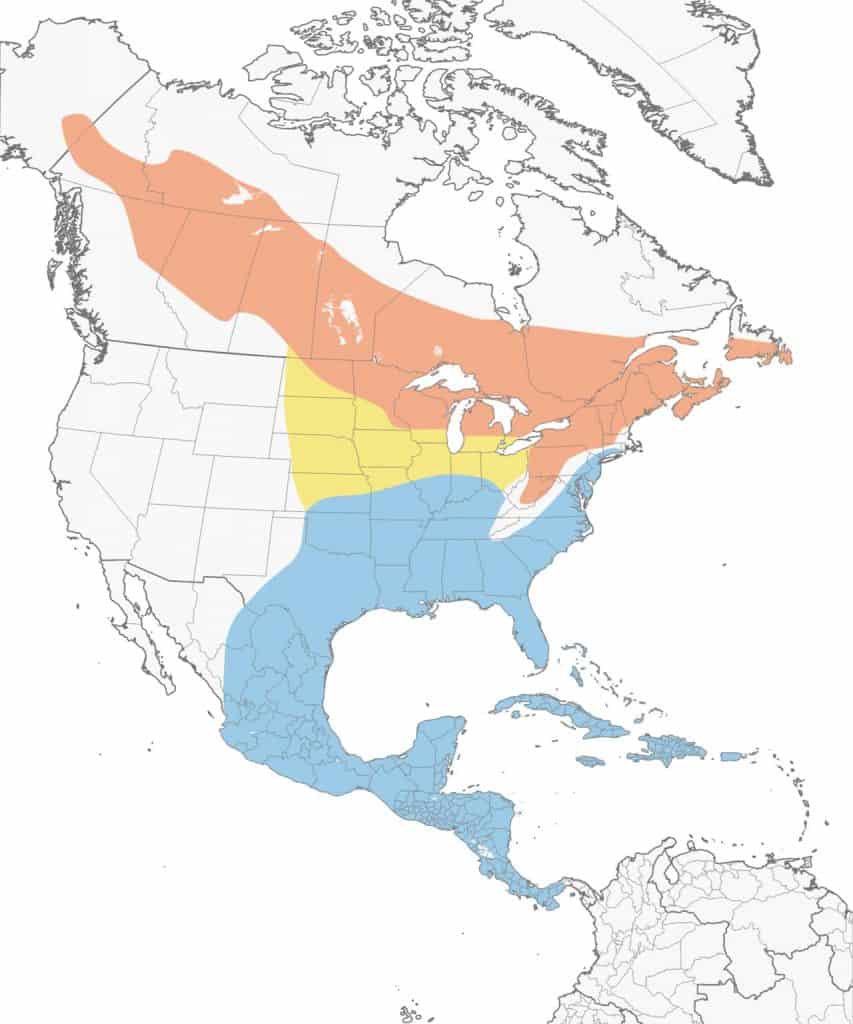
Minnesota Woodpeckers that Don’t Migrate
We explored the three woodpecker species that are migrators. Now it’s time to know the five Minnesota woodpeckers that do not migrate. They remain in their year-round range all seasons of the year or if they do move, it’s a very short distance such as a few miles.
- Hairy Woodpecker
- Pileated Woodpecker
- Downy Woodpecker
- Red-Bellied Woodpecker
- American Three-toed Woodpecker
In Conclusion
Minnesota woodpeckers are an interesting bunch. Some are called woodpeckers, some sapsuckers, and others flickers – but they’re all part of the same family.
Most woodpeckers don’t migrate but three species do. They include the northern flicker, the red-headed woodpecker, and the yellow-bellied sapsucker.
As widespread as woodpeckers are, all Minnesotans should be able to enjoy them wherever they are in the state – even if it’s just a glimpse of them passing through.
Hope you enjoyed it. Happy birding!
Range Maps are compliments of The Cornell Lab.

